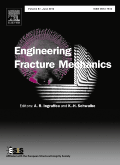
ENGINEERING FRACTURE MECHANICS
Scope & Guideline
Shaping the Future of Engineering through Fracture Studies
Introduction
Aims and Scopes
- Fracture Mechanics Theory and Applications:
The journal covers theoretical advancements in fracture mechanics, including stress intensity factors, J-integral formulations, and cohesive zone models. It emphasizes practical applications in engineering, particularly in materials science and structural analysis. - Material Behavior Under Stress:
Research articles delve into the mechanical behavior of various materials (metals, polymers, composites, ceramics) under different loading conditions, focusing on fatigue, creep, and fracture toughness. - Experimental and Numerical Investigations:
The journal encourages submissions that combine experimental data with numerical modeling approaches, such as finite element analysis (FEA), peridynamics, and phase-field methods, to understand crack propagation and material failure. - Innovative Testing Methods:
It publishes studies on new experimental setups and methodologies for evaluating fracture toughness, crack growth rates, and other mechanical properties of materials, enhancing the reliability of fracture testing. - Multiscale and Multiphysics Approaches:
There is a strong focus on integrating multiscale modeling and multiphysics approaches to capture complex interactions in material behavior, especially in heterogeneous and composite materials.
Trending and Emerging
- Machine Learning and AI in Fracture Prediction:
There is a growing trend in integrating machine learning and artificial intelligence techniques for predicting fracture behavior and crack propagation, enhancing the accuracy and efficiency of predictive models. - Hydraulic Fracturing and Its Mechanisms:
Research on hydraulic fracturing, particularly in geological formations, has surged, focusing on the mechanisms of crack propagation, fluid dynamics, and the impact of environmental conditions on fracture behavior. - Phase-Field and Peridynamic Modeling Approaches:
Emerging methodologies, such as phase-field and peridynamic models, are increasingly popular for simulating complex fracture processes, allowing for greater flexibility in modeling intricate crack interactions. - Environmental Effects on Fracture Mechanics:
A significant increase in studies addressing the influence of environmental factors, such as temperature, humidity, and chemical exposure, on the mechanical properties and fracture behavior of materials has been observed. - Composite Materials and Advanced Structures:
There is a notable rise in research focused on the fracture mechanics of composite materials and advanced structures, driven by their increasing use in aerospace, automotive, and civil engineering applications.
Declining or Waning
- Traditional Fracture Testing Methods:
There has been a noticeable decline in papers focusing exclusively on conventional fracture testing methods, such as standard Charpy or compact tension tests, as researchers increasingly explore advanced and innovative testing techniques. - Static Fracture Mechanics:
Research centered on static fracture mechanics appears to be waning, as the field shifts toward dynamic loading conditions and the effects of environmental factors like temperature and humidity on fracture behavior. - Microstructural Studies without Integration to Fracture Mechanics:
While microstructural studies remain relevant, there is a decrease in papers that do not integrate these findings with fracture mechanics principles, indicating a trend towards more interdisciplinary approaches. - Empirical Models without Theoretical Basis:
Papers that propose purely empirical models for fracture prediction without a solid theoretical framework are becoming less common, as the field moves toward more rigorous, physics-based modeling approaches.
Similar Journals
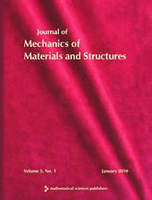
Journal of Mechanics of Materials and Structures
Advancing the Science of Materials and Structures.Journal of Mechanics of Materials and Structures, published by Mathematical Science Publishers, is a distinguished periodical in the field of Applied Mathematics and Mechanics of Materials. With the ISSN 1559-3959, this journal has been a pivotal platform since its inception in 2006, providing insights and advancements in the mechanics of materials and their structural applications. Operating out of the University of California, Berkeley, this journal not only boasts a respectable standing within its categories, ranking Q4 in Applied Mathematics and Q3 in Mechanics of Materials as of 2023, but it also serves a crucial role in fostering academic discourse among researchers, practitioners, and students alike. Although it does not currently offer open access, its contributions to the respective fields are invaluable, underscoring the relevance and importance of continued research in understanding material behavior and structural integrity. Whether investigating theoretical frameworks or engineering applications, the Journal of Mechanics of Materials and Structures remains an essential resource for anyone dedicated to the advancement of the science of materials and structures.
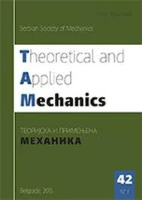
Theoretical and Applied Mechanics
Unlocking the Potential of Computational Mechanics.Theoretical and Applied Mechanics is a premier open-access journal published by the Serbian Society of Mechanics, dedicated to advancing the fields of Applied Mathematics, Computational Mechanics, and Mechanical Engineering. Since its inception, this journal has provided a vital platform for researchers and practitioners to publish high-quality, peer-reviewed articles that contribute to our understanding of theoretical concepts and their practical implications in mechanics. With an ISSN of 1450-5584 and a growing international readership, Theoretical and Applied Mechanics aims to bridge the gap between theory and application, making significant strides in the engineering community. Although the journal is currently ranked in the Q4 category across its scopes, it encourages innovative research that fosters interdisciplinary collaboration. For those interested in exploring cutting-edge developments in the mechanics field, this journal offers an invaluable resource for researchers, professionals, and students alike.

FATIGUE & FRACTURE OF ENGINEERING MATERIALS & STRUCTURES
Pioneering Research in Material ResilienceFATIGUE & FRACTURE OF ENGINEERING MATERIALS & STRUCTURES, published by WILEY, is a leading journal in the domains of materials science and mechanical engineering, with a solid reputation for advancing research on the behavior of materials under fatigue and fracture conditions. With an impressive impact factor and ranking in the top quartiles of its categories in 2023, this journal serves as a vital resource for academics, professionals, and students interested in the intricate mechanics of materials. The journal encompasses a comprehensive scope, covering both experimental and theoretical methodologies designed to understand and predict material performance under various loading conditions. As the journal continues to thrive since its inception in 1979 and is set to converge until 2024, it remains an essential platform for disseminating innovative and crucial findings in this specialized field. Researchers are invited to explore the wealth of knowledge presented within its pages, paving the way for enhanced engineering practices and material design.
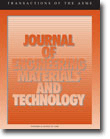
JOURNAL OF ENGINEERING MATERIALS AND TECHNOLOGY-TRANSACTIONS OF THE ASME
Elevating the discourse on materials technology and its impact.JOURNAL OF ENGINEERING MATERIALS AND TECHNOLOGY-TRANSACTIONS OF THE ASME is a premier journal published by the American Society of Mechanical Engineers (ASME), dedicated to advancing the field of engineering materials and technology. With an ISSN of 0094-4289 and E-ISSN 1528-8889, this journal has provided invaluable insights since its inception in 1973. Operating from its headquarters in New York, United States, it serves a global audience of researchers, professionals, and students alike. The journal is recognized for its rigorous peer-review process and its commitment to disseminating high-quality research, currently holding a Q3 quartile ranking across multiple categories including Condensed Matter Physics, Materials Science, Mechanical Engineering, and Mechanics of Materials. With a focus on exploring innovative materials and their applications, it aims to foster collaboration and discovery in the engineering community. Although it is not an open-access journal, it continues to play a vital role in shaping the future of engineering materials research up to 2024. Researchers and practitioners will find in this journal a significant platform to support the development and understanding of engineering materials, making contributions that resonate through academia and industry.
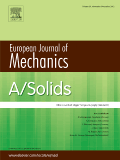
EUROPEAN JOURNAL OF MECHANICS A-SOLIDS
Leading the Charge in Mechanics ResearchThe EUROPEAN JOURNAL OF MECHANICS A-SOLIDS, published by ELSEVIER and based in the Netherlands, stands as a premier outlet for research in the field of solid mechanics. With an impressive track record since its inception, the journal has been indexed in prestigious categories including Materials Science, Mechanical Engineering, and Mathematical Physics, achieving Q1 quartile status across these domains in 2023. This recognition underscores the journal's impact, with Scopus rankings placing it in the top echelon of its respective fields, such as #39 in General Physics and Astronomy and #116 in Mechanical Engineering, demonstrating its significance and wide-reaching influence in the academic community. Scientists, engineers, and researchers are encouraged to submit their cutting-edge findings in areas related to solid mechanics, contributing to the journal's mission of advancing knowledge and innovation in this vital discipline. The journal's comprehensive scope allows for interdisciplinary engagement, making it an essential resource for professionals and students alike seeking to explore the latest developments in mechanics of materials and related areas.
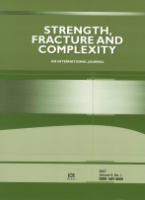
Strength Fracture and Complexity
Innovating Insights at the Intersection of Physics and EngineeringStrength Fracture and Complexity, published by IOS Press, serves as a vital resource for researchers and professionals working at the intersection of Condensed Matter Physics, Mechanical Engineering, and Mechanics of Materials. With an ISSN of 1567-2069 and E-ISSN of 1875-9262, this journal is dedicated to exploring innovative studies and advancing knowledge on material strength and fracture mechanics. Since its inception, spanning from 2003 to 2007 and resuming from 2009 to 2024, it has published impactful research contributing to the understanding of material behaviors under various conditions. Although currently positioned in the Q4 quartile across its relevant categories, the journal aims to elevate discourse through high-quality publications that engage the academic community. Researchers can access a breadth of studies which are crucial for guiding engineering practices and advancing theoretical frameworks in these fields, despite limitations in Open Access options. Located in the Netherlands, Strength Fracture and Complexity remains committed to fostering international collaboration and knowledge exchange among scientists and engineers alike.
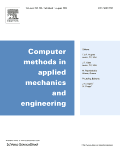
COMPUTER METHODS IN APPLIED MECHANICS AND ENGINEERING
Advancing the Frontiers of Computational Mechanics.COMPUTER METHODS IN APPLIED MECHANICS AND ENGINEERING, published by Elsevier Science SA, is a premier journal that has significantly contributed to the fields of computational mechanics, computer science applications, mechanical engineering, and the mechanics of materials since its inception in 1972. With an ISSN of 0045-7825 and an E-ISSN of 1879-2138, this journal is recognized for its rigorous peer-review process and is consistently ranked in the Q1 quartile across multiple categories, including Computational Mechanics and Mechanical Engineering. Its impressive Scopus rankings place it in the top tiers of its field, with a percentile ranking of 98th in Computational Mechanics. Researchers, professionals, and students will find the journal's comprehensive scope and high-quality articles invaluable for advancing their knowledge and practices at the intersection of engineering and computation. Although not an open-access journal, its impactful contributions to both theoretical and applied research make it an essential resource for anyone involved in these dynamic fields.
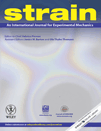
STRAIN
Innovating the Future of Materials MechanicsSTRAIN is a prestigious peer-reviewed journal published by WILEY, dedicated to advancing the field of mechanical engineering and mechanics of materials. With an ISSN of 0039-2103 and an E-ISSN of 1475-1305, STRAIN has been a pivotal resource for researchers and professionals since its inception in 1965. As of 2023, it holds a commendable categorization in the Q2 quartile rankings for both Mechanical Engineering and Mechanics of Materials, reflecting its significant contribution to the field and ranking in the top percentile of its category. STRAIN aims to disseminate high-quality, innovative research that enhances the understanding of strain phenomena and materials behavior under various conditions. Researchers seeking to publish cutting-edge studies will find a welcoming platform in STRAIN, where they can share their insights with a global audience committed to the evolution of engineering practices. Although it does not offer an Open Access option, its robust editorial standards ensure that all published works adhere to the highest levels of academic integrity and scientific rigor.
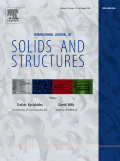
INTERNATIONAL JOURNAL OF SOLIDS AND STRUCTURES
Connecting Researchers in Engineering ExcellenceINTERNATIONAL JOURNAL OF SOLIDS AND STRUCTURES, published by PERGAMON-ELSEVIER SCIENCE LTD, is a leading academic journal with a strong reputation in the fields of engineering and applied mathematics. Established in 1965 and converging its impact on research through 2024, this journal is highly regarded within Q1 quartile rankings across multiple disciplines, including Applied Mathematics, Condensed Matter Physics, and Mechanical Engineering. With its ISSN 0020-7683 and E-ISSN 1879-2146, the journal is systematically indexed and accessible to a global audience, although it does not currently offer open access options. Researchers, professionals, and students alike benefit from its high-impact research articles, as evidenced by its impressive Scopus rankings in various categories, including a 91st percentile in Applied Mathematics and 81st in Mechanical Engineering. The journal serves as a critical platform for the dissemination of groundbreaking findings in solid and structural mechanics, promoting innovation and collaboration within the scientific community.

EXPERIMENTAL MECHANICS
Pioneering Research in Mechanics of Materials.EXPERIMENTAL MECHANICS, published by SPRINGER, stands at the forefront of research in the fields of Aerospace Engineering, Mechanical Engineering, and Mechanics of Materials. Established in 1961, this esteemed journal has made significant contributions to the understanding and advancement of experimental methodologies and techniques essential for both academic research and practical applications in engineering. With an impressive impact factor and recognition as a Q2 journal in its category for 2023, it ranks 40th in Aerospace Engineering and has established itself as a valuable resource for researchers and practitioners alike. Although it is not an Open Access journal, it provides robust access options, ensuring that high-quality research remains accessible to a broad audience. The journal aims to disseminate innovative findings, foster collaboration, and inspire the next generation of engineers and scientists by focusing on the challenges and developments within experimental mechanics. The editorial board comprises leading experts in their respective fields, further emphasizing the journal’s commitment to excellence and relevance in an ever-evolving technological landscape.